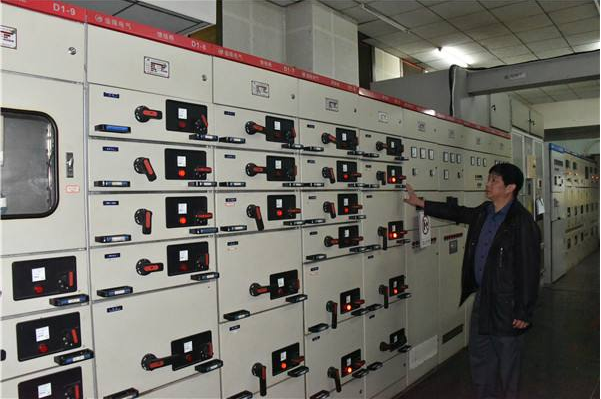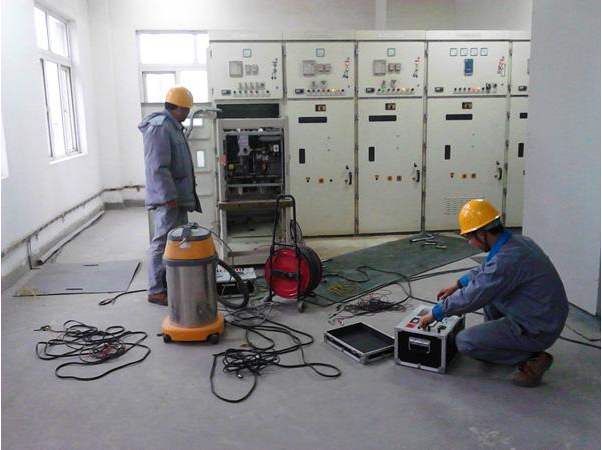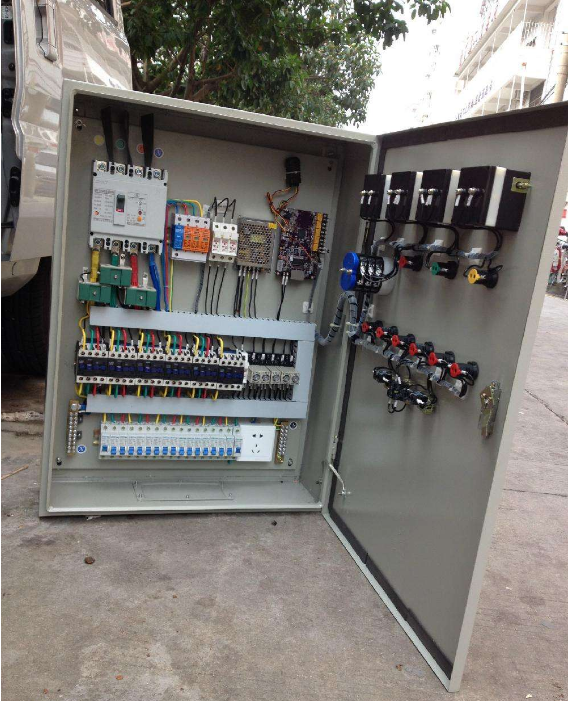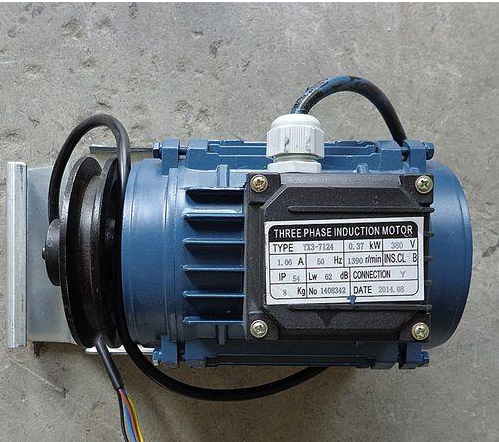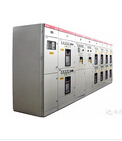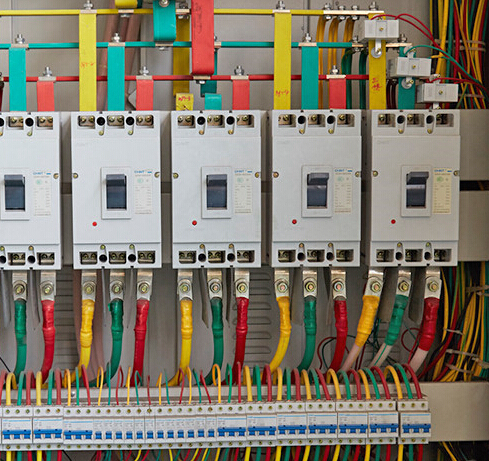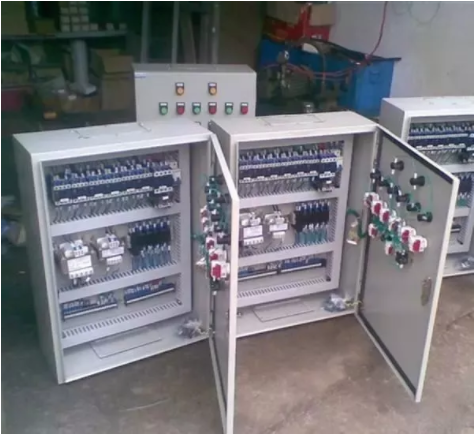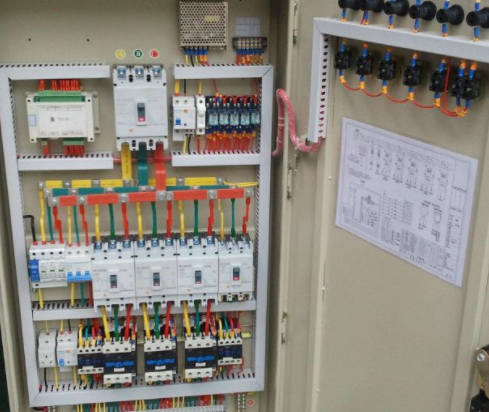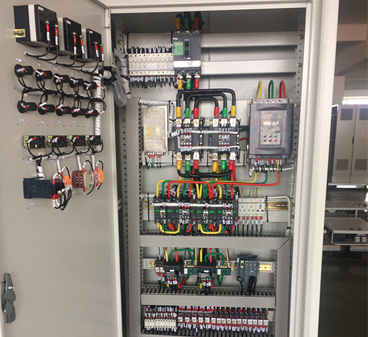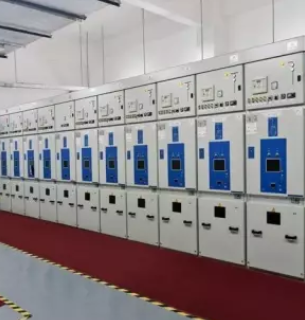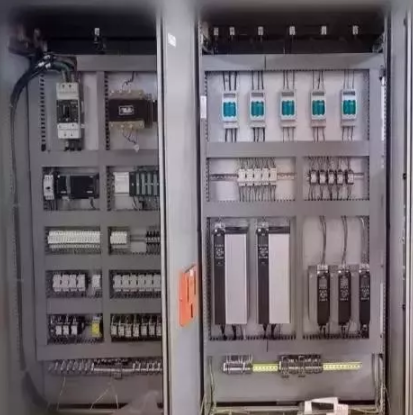Comrades who do high and low voltage power distribution know that there will always be some professional problems in their daily work. Today, AMPLUM will organize and summarize for you. You can collect it!
1. What is a TT, IN, IT system?
Answer: TT mode refers to the protection system that directly grounds the metal casing of electrical equipment, called the protective grounding system, also known as the TT system. The TN method is a protection system that connects the metal casing of the electrical equipment to the working neutral line, called the zero-connection protection system, and is represented by TN. The IT method is that the power supply side has no working ground or is grounded through high impedance. Protection system for ground protection of load side electrical equipment.
2. What is the standard frequency of China's power grid?
A: It is 50Hz, also called power frequency.
3. Classification of power load?
A: Level 1 load: interruption of power supply will result in personal injury or death; or political or economic damage will be caused. Secondary load: The secondary load will cause large losses in political and economical reasons for the interruption of power supply. The tertiary load: the tertiary load is the general power load.
4. What is an electric arc?
Answer: Arc is a physical phenomenon produced during the operation of electrical equipment. It is characterized by high brightness and high temperature.
5. What is a substation?
A: It is the power supply hub for the task of receiving power from the power system, transforming (boosting or stepping down), and then distributing power.
6. What are the famous brands of high and low voltage electrical appliances at home and in China?
A: Internationally: 157. What is the phase voltage and phase current? Line voltage, line current?
Answer: In the three-phase four-wire circuit, the voltage of the phase line and the neutral line is the phase voltage; the voltage between any two phase lines is the line voltage; the line voltage is √3 times the phase voltage. The current flowing through the load of each phase is the phase current; the current flowing through the phase line is the line current.
7. What is the main role of the transformer in the power system?
A: The main function is to change the voltage to facilitate the transmission of power. On the same line, the same power is transmitted. After the voltage is boosted by the step-up transformer, the current transmitted by the line is reduced, which can reduce the line loss, improve the power transmission efficiency, and achieve the purpose of long-distance power transmission. It can meet the needs of users who use voltage at all levels.
8 What are the main parameters of the transformer?
Answer: (1) rated voltage; (2) rated current; (3) rated capacity; (4) no-load current; (5) no-load loss; (6) short-circuit loss; (7) impedance voltage; Connection diagram, phasor diagram and connection group label.
9. What is the thermal effect of short-circuit current?
Answer: When a short circuit occurs in the circuit, the extremely short circuit current will cause the temperature of the conductor to rise rapidly, which is called the thermal effect of the short circuit current.
10. What is eddy current? What are the harmful effects of eddy current generation?
A: When alternating current is passed through the wire, an alternating magnetic field is generated around the wire. Inductive current is generated inside the monolithic conductor in the alternating magnetic field. Since this induced current is self-contained in the entire conductor, it is like a vortex of water, so it is called eddy current. The eddy current will not only lose energy in vain, but also reduce the efficiency of using electrical equipment, and it will cause heating of electrical appliances (such as transformer core), which will affect the normal operation of the equipment.
11. What is the definition and classification of secondary circuits?
Answer: The secondary circuit is used to monitor the measuring instrument, control the operating signal, all the low-voltage circuits of the relay and the automatic device are called the secondary circuit, and the secondary circuit can be divided into: (1) current circuit; (2) voltage according to the power supply and use. Loop; (3) operating loop; (4) signal loop.
12. What are the common cage asynchronous motor decompression starting methods?
Answer: (1) Three-phase resistance decompression start.
(2) The reactor is decompressed and started.
(3) The autotransformer is decompressed and started.
(4) Star Delta decompression starts.
(5) Yanbian triangle decompression start.
13. What conditions should the transformer be operated in parallel?
Answer: The three ratios are equal, the connection groups are the same, and the short-circuit voltage is the same.
14. Why use a transformer when measuring high voltage and high current?
Answer: (1) Expand the scope of use of the instrument. As long as transformers with different transformer ratios and converter ratios are used with a voltmeter with a full-scale voltage of 100V and an ammeter with a full-scale current of 5A, various voltages and currents can be measured.
(2) Make the specifications of instruments and relays uniform, easy to standardize, and mass production.
(3) The use of transformers as intermediate components of primary and secondary circuits isolates the danger of high voltage and also prevents secondary circuit failures from affecting the primary circuit.
15. What is a switchgear?
Answer: It is mainly used for power generation, transmission, power distribution, and electrical energy conversion related switchgear and the combination of control, detection, protection and adjustment equipment associated with these switchgear.
16. What is a control device?
Answer: A general term used to control the switching devices of powered devices and the combination of control, detection, protection and regulating devices associated with these switching devices.
17. What is over current?
A: Any electricity that exceeds the rated current.
18. How is the current formed?
Answer: The free electrons in the conductor move in a regular direction under the action of the electric field force to form a current.
19. What are the indicators of power quality?
Answer: Voltage deviation, voltage fluctuation and flicker, voltage sine wave distortion rate, frequency deviation.
20. What are the conditions for high-voltage electrical appliances?
Answer: A. Insulation is safe and reliable; B. Long-term operation under rated current and a certain short-time overload capability; C. Thermal and electrodynamic effects capable of carrying short-circuit current without damage; D. Switching electrical appliances can be safely and reliably closed Break the specified current; E. Outdoors should withstand certain natural disasters.
21. Does the high voltage electrical appliance have to meet the workplace?
Answer: A. rated voltage; B. maximum working voltage; C. rated current; D. rated short-circuit breaking current; E short-time withstand current and peak withstand current.
22. Basic requirements for high voltage circuit breakers?
Answer: A is reliable; B. has sufficient breaking capacity C. has the shortest cut-off time; D. simple structure and low price.
23. What is the purpose of the isolating switch?
Answer: A. Separate the electrical equipment from the live power grid; B. Change the operating mode; C. Connect and disconnect the small current circuit.
24. What is a busbar?
Answer: In the voltage distribution devices of power plants and substations, the wires connecting the engine and the transformer to various electrical appliances are called bus bars.
25. Classification of busbars?
A: Soft busbar (used for high voltage outdoor power distribution room) and hard busbar (low voltage internal and external power distribution device).
26. What is the material of the busbar?
A: Copper busbars, aluminum busbars and steel busbars.
27. What is the significance of bus coloring?
A: It can increase the radiation capacity, which is good for heat dissipation, and allows the load current to increase by 12~15% after coloring.
28. What are the main technical parameters of the fuse?
Answer: A. rated voltage; B. rated current; C. breaking capacity; D. melting characteristics; E. overvoltage.
29. What are the main products of low-voltage power distribution equipment?
A: Low-voltage power distribution panel, switch cabinet, switch board, lighting box, power box and motor control center.
30. What is the peak load? What is the trough load? What is the average load?
Answer: Peak load refers to the maximum load value that the grid and users have during the day. The trough load is the average hourly power of the grid and the user who spends the least amount of time during the day. The average load is the average hourly power consumption of the grid and the user during a certain period of time.
31. How many three-phase neutral point operation methods are available in China's power system?
Answer: 1. Three-phase system with neutral point not grounded (insulated); 2. Three-phase system with neutral point grounded by arc suppression coil; 3. Three-phase system with neutral point directly grounded.
32. Notes on using current transformers?
Answer: 1. The secondary side of the working side must not open the circuit; 2. One end of the secondary side must be grounded; 3. Pay attention to the polarity of the terminal when connecting.
33. Notes on using voltage transformers?
Answer: 1. The secondary side of the work shall not be short-circuited; 2. One end of the secondary side must be grounded; 3. Pay attention to the polarity of its terminals when connecting.
34. What are the principles for drawing and reading schematics of electrical control circuits?
Answer: A. The schematic diagram is generally divided into power circuit, main circuit, control circuit, signal circuit and lighting circuit.
B. In the schematic diagram, the position of each electrical contact is drawn according to the normal position when the circuit is not energized and is not subjected to external force. When analyzing the principle, it should start from the normal position of the contact.
C. In the schematic diagram, each electrical component does not draw the actual outline drawing, but is drawn by the unified national standard symbol specified by the state.
D. In the schematic diagram, the electrical components are not drawn together according to their actual position, but are drawn in different circuits according to their functions in the circuit, but their actions are related to each other and must be marked with the same Text symbol.
E. In the schematic diagram, the cross-wire connection points with direct electrical connection shall be indicated by small black dots, and the cross-wire connection points without direct electrical connection shall not draw small black dots.
35. What is current protection and what is the operating principle?
Answer: When a short circuit occurs, one of the important features is that the current in the line increases sharply. When the current flows through a predetermined value, the protection device that acts in response to the current rise is called overcurrent protection. The operating current is considered in terms of the maximum load current, and the choice is based on the stepped time limit.
36 The main difference between electronic control equipment and power distribution equipment products?
Answer: The functions of the electronic control equipment are mainly controlled, and the functions of the power distribution equipment are mainly transmission.
37 What are the external designs of domestic electronic control equipment products?
A: Control screen, control cabinet, control box and console.
38 What are the external designs of domestic power distribution equipment products?
Answer: The front panel type, cabinet type and box type are also mainly used for indoor type, fixed type and component fixed assembly, and some products adopt drawer type cabinet.
39 Power transmission circuit?
Answer: The line between the power plant's step-up substation and the regional substation and the substation between the substations is dedicated to the transmission of electrical energy.
40 power distribution circuit?
Answer: From regional substation to power unit substation or city or township power supply line, it is used to distribute electric energy.
41. Can power lines be divided into erection methods?
Answer: Overhead power lines and cable lines.
42 What is a relay protection device?
Answer: A device that can respond to a fault or abnormal operation of an electrical device in a power system and act on a switch trip or signal.
43 What kinds of relays are commonly used?
Answer: Current relays, voltage relays, signal relays, time relays, intermediate relays, differential relays, and gas relays.
44 What are the protection devices for transformers?
Answer: Overcurrent protection, current quick-break protection, differential protection and gas protection.
45 What are the requirements for relay protection?
Answer: In order to correct the fault correctly and quickly, relay protection is required to have sufficient selectivity, speed, sensitivity and reliability.
46 What are the relay protections for small and medium-sized substations?
Answer: A over current protection; B current fast cut protection; C limited current fast cut protection; D low voltage protection.
47 Classification of monitoring and distribution system?
Answer: Manual monitoring, automatic monitoring of remote devices and automatic monitoring of microcomputers.
48. What are the advantages of automatic monitoring of microcomputers?
A: The device is small in size, high in reliability, and has functions such as storing, memorizing, computing, and logically judging information, and can collect, process, print, and display data.
49 What is overvoltage?
Answer: The voltages that are dangerous to insulation are collectively referred to as overvoltages.
50 Classification of electrical experiments based on function and requirements?
Answer: It can be divided into insulation test and characteristic test.
51 What are the factors that affect the degree of harm to the human body due to electric shock?
A: The magnitude of the current, the duration of the current, the path through which the current flows, the resistance of the human body, and the frequency of the current.
52 Type of electric shock?
Answer: Direct electric shock, electric contact, induced voltage electric shock, lightning electric shock, electrostatic electric shock.
53. What are the organizational measures to ensure safety in electrical equipment?
A: Work ticket system, operation ticket system, inventory site and comprehensive payment system, work permit system, job supervision system, work interruption and work transfer system, and work termination and power transmission system.
54. What role does the DC system play in the substation?
Answer: The DC system provides a reliable DC power supply for control signals, relay protection, automatic devices and accident lighting in the substation, and also provides reliable operating power for operation. The reliability of the DC system plays a vital role in the safe operation of the substation and is the guarantee for the safe operation of the substation.
55. What are the common DC power supplies for substations?
A: Battery, silicon flow and capacitor energy storage.
56. What is the phase sequence?
Answer: The order of the phase is the order in which the instantaneous value of the alternating current changes from a negative value to a positive value through a zero value.
57. What is the safety distance of the human body grounding point when the grounding fault occurs in the high voltage equipment?
Answer: The room should be larger than 4 m and the outdoor should be 8 m.
58. Which electrical equipment must be grounded or zero protected?
Answer: 1. The base and outer casing of generators, transformers, motors, high and low voltage electrical appliances and lighting appliances; 2. Secondary coils of transformers; 3. Frames of switchboards and control panels; 4. Transmission devices for electric equipment; Metal structure of the distribution equipment inside and outside the house, concrete frame and metal fence; 6, cable head and cable box casing, cable sheath and threaded steel pipe; 7, power line tower and switchgear and capacitors installed on the distribution line pole.
59 What data is marked on the nameplate of the asynchronous motor? What does each mean?
Answer: The following data is mainly marked on the nameplate of the AC asynchronous motor and its meaning is as follows:
(1) Rated power (P): is the output power on the motor shaft.
(2) Rated voltage: refers to the line voltage applied to the winding.
(3) Rated current: stator winding line current.
(4) Rated number of revolutions (r/min): Number of revolutions at rated load.
(5) Temperature rise: refers to the insulation level is more than the ambient temperature.
(6) Work quota: the work mode allowed by the motor.
(7) Connection of the winding: Δ or Y connection, corresponding to the rated voltage.
60 What should I do if someone is found to have an electric shock?
Answer: First, make the electric shocker quickly disconnect from the power supply. The method, for low-voltage electric shock, can adopt the methods of “pull”, “cut”, “pick”, “拽”, “pad”, pull or cut off the power supply, and care should be taken to avoid electric shock to people, and dry should be used. Insulated weapon or object, to cut off the power or to isolate the electric shock from the power supply. For high-voltage electric shock, the power supply department should be notified to make the electric shock circuit power off, or use the insulation rod with the same voltage level to open the drop fuse to cut off the circuit. Or take the method of shorting the line to cause the trip to open the circuit. Also pay attention to the safety of the ambulance and prevent electric shock from striding voltage.
Electric shock people are shocked at high places, and care should be taken to prevent falling injuries. After the electric shocker is disconnected from the power supply, he or she will be taken to the hospital or first aid according to the degree of injury.
















 RCCN WeChat QrCode
RCCN WeChat QrCode Mobile WebSite
Mobile WebSite